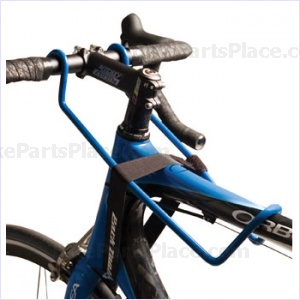
Bicycling is the fastest way to travel in a city particularly when traffic is bad which most of the time is. In general a bicycle is faster than a bus, train, taxi, or pedestrians. This partly has to do with the fact that bicycles can get the best of all words when it comes to riding conduct. You can flow with your preference of pedestrians, cars, buses and taxis in most urban environments depending on which flow look best to you at the moment.
When you are riding in the city the consequence of crashing is typically much greater than when mountain biking of road. When I go mountain biking off road I typically crash at least two times just because I tend to try to do difficult things. The consequences are not too severe because nine times out of ten I end up in the bushes with scratches but, importantly I don’t get injured. Benefits of this are that I know what my limits are in wide variety of situations, and since I get a lot of practice crashing I am not out of my element in that span of time that I am moving, but am neither on my bike or feet. Urban riding is more dangerous because everything is hard and many of the hard things are big and move around unpredictably.
So what is the best type of bike configuration for aggressive city riding? I think the answer is a modified mountain bike rather than road bike which is typically regard as the best bike for the street. The problems with road bikes for congested and unpredictable city riding are the drop handlebars, narrow tires, and lack of at least some front suspension.
Regular width or narrow handlebars, but not too narrow because there is a trade off are a good choice when picking handle bars of city riding. Narrow handle bars are greatly appreciated when you are riding between cars or though any narrow spaces because your handle bars are the widest part of your bicycle and your handlebars are about the same height as the side view mirrors on cars. Narrow is good for a streamlined profile that allows you to fit between tight places but wide handle bars is important for improved control.
You should pick a set of mountain bike tires designed for hard pack which is a tire with minimal tread along the outer circumference of the bike tire which is the part in continues contact with the road, and also has some moderate tread on the outer edges of the bicycle tire so that if you do find yourself on a softer surface the tread will provide increased traction. Knobby tires create excessive rolling resistance on the road. Slick tires are not a good idea because certain conditions like water and sand on a smooth surface can cause them to loose traction. Although a thin profile tires or road bike tires are faster on the road they do not deal well with city roads which have sewer grates (which a road tire falls perfectly into), any kind of debris, pot holes, and wet surfaces. Wider tires also have more surface area so you can break more quickly and stay in better control when you need to break rapidly. When you are sharing the road with cars going around obstacles is often not an option. It is the nature of this activity that you will have to deal with avoidable bumps. A good choice would be 26 inch mountain bike tires with a width in the range of 1.75-2.0″ are about the right size.


 Shopping
Shopping



Natually I’ll give you a hyperlink in your net blog.